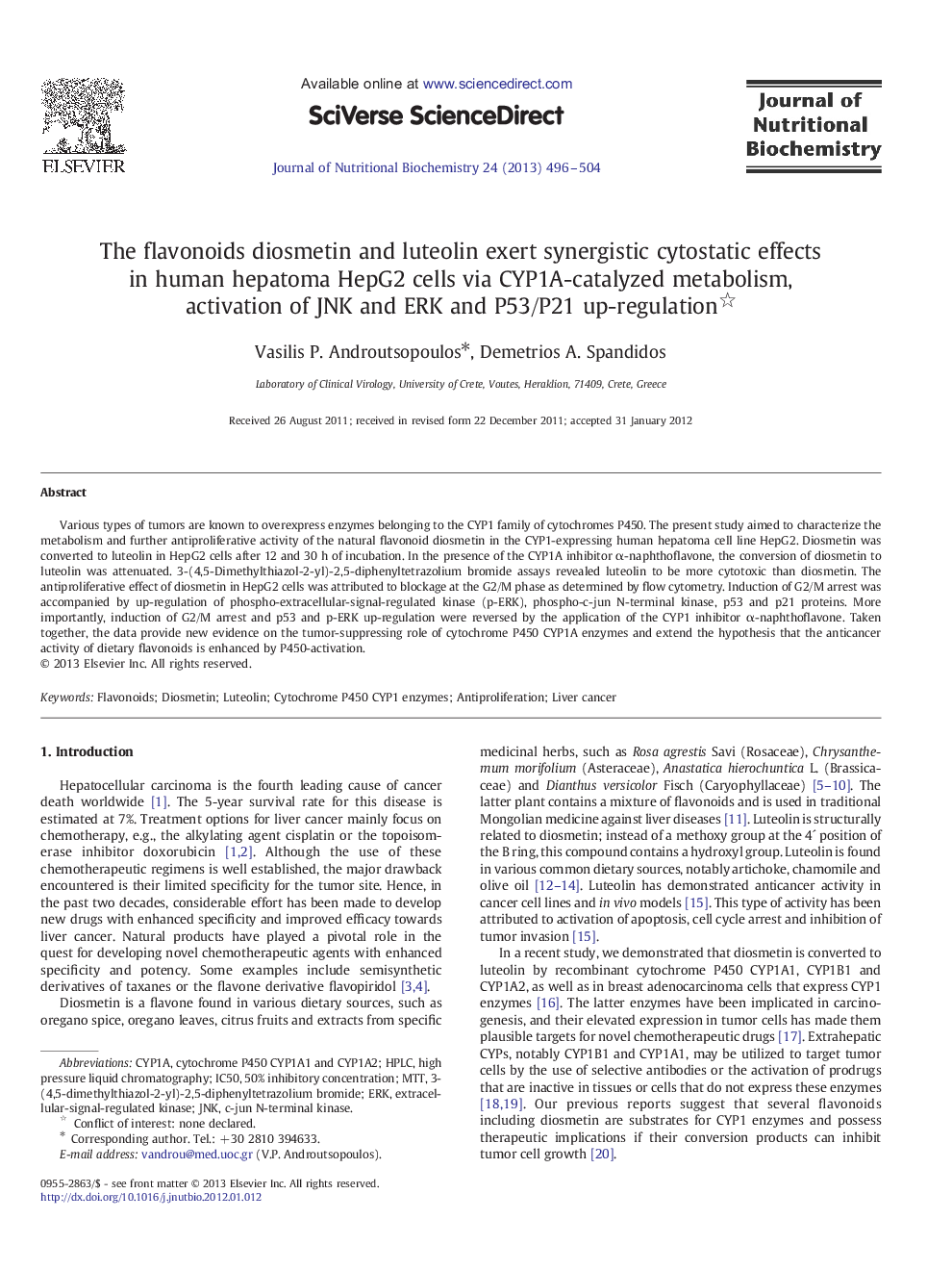| Article ID | Journal | Published Year | Pages | File Type |
|---|---|---|---|---|
| 1990132 | The Journal of Nutritional Biochemistry | 2013 | 9 Pages |
Various types of tumors are known to overexpress enzymes belonging to the CYP1 family of cytochromes P450. The present study aimed to characterize the metabolism and further antiproliferative activity of the natural flavonoid diosmetin in the CYP1-expressing human hepatoma cell line HepG2. Diosmetin was converted to luteolin in HepG2 cells after 12 and 30 h of incubation. In the presence of the CYP1A inhibitor α-naphthoflavone, the conversion of diosmetin to luteolin was attenuated. 3-(4,5-Dimethylthiazol-2-yl)-2,5-diphenyltetrazolium bromide assays revealed luteolin to be more cytotoxic than diosmetin. The antiproliferative effect of diosmetin in HepG2 cells was attributed to blockage at the G2/M phase as determined by flow cytometry. Induction of G2/M arrest was accompanied by up-regulation of phospho-extracellular-signal-regulated kinase (p-ERK), phospho-c-jun N-terminal kinase, p53 and p21 proteins. More importantly, induction of G2/M arrest and p53 and p-ERK up-regulation were reversed by the application of the CYP1 inhibitor α-naphthoflavone. Taken together, the data provide new evidence on the tumor-suppressing role of cytochrome P450 CYP1A enzymes and extend the hypothesis that the anticancer activity of dietary flavonoids is enhanced by P450-activation.
